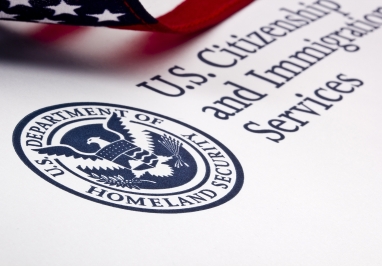
In response to the pandemic push for more electronic options to comply with federal regulations, a simplified and updated Form I-9 will be available August 1, 2023, and it is expected to be available for download from the USCIS’ website on Tuesday. Employers should begin using the new form ASAP, but must begin using it not later than November 1, 2023, to avoid potential penalties and legal violations. The revised form is shorter and designed to be a fillable form on mobile devices. It provides separate standalone sections for Preparer/Translator Certification (Supplement A) and Reverification/Rehire (Supplement B) that can each be used on an “as needed” basis.
HOT TIP: Look for the revision date listed at the bottom of the Form I-9’s in use at your company. The expiring form carries a revision date of 10/21/2019, and the revised form is expected to carry a revision date of 08/01/2023. Using an expired Form I-9 can result in fines and penalties, so it is critical that employers use the correct version of the form.
In addition to a streamlined Form I-9, employers must also ensure that they’re in compliance with document review requirements, including for remote employees who were hired during the COVID-19 pandemic. During the COVID-19 pandemic, “temporary flexibilities” were permitted that allowed employers to initially review employees’ Form I-9 documentation remotely (e.g., through a video link, fax, or email) and then obtain copies of the documents. If an employer took advantage of this flexible process over the last couple of years, the employer may be employing individuals who have not had their documents physically inspected in person. As will be discussed below, that situation now requires correction during the month of August 2023.
Effective on August 1, 2023, the “temporary flexibilities” will expire, and employers will need to consider two points:
- Do the documents of an employee hired during the COVID-19 pandemic now need to be reviewed given the expiration of the temporary flexibilities? If so, how should that be done?
- Do the employer’s document review protocols need to be revamped?
The answer to these questions depends largely on whether an employer is enrolled in E-Verify and if the employer was enrolled in E-Verify at the time the employee whose documents are in question was hired.
If an employer is not currently enrolled in E-Verify in good standing or was not enrolled in E-Verify at the time of the employee’s hire, then the employer must complete in-person physical document inspection for that employee if that person’s documents were inspected remotely during the temporary flexibilities by August 30, 2023. Moving forward, these employers who wish to take advantage of the remote review process for new employees will need to enroll in E-Verify.
Employers currently enrolled in good standing in E-Verify that (1) were enrolled in E-Verify at the time they performed a remote examination of an employee's documentation using the COVID–19 flexibilities, (2) created an E-Verify case for that employee (except for reverification), and (3) performed the remote inspection between March 20, 2020 and July 31, 2023, can use the alternative procedure described below to satisfy the required physical examination of the employee's documents for that Form I–9.
Employers who are enrolled in the E-Verify System will be able to take advantage of the new optional process to use video verification of documents for newly hired employees. Under this system, an employer may choose to offer the alternative to all employees or only to remote hires. (If only a subset of employees is offered the alternative review procedure, the employer must be cautious to ensure eligibility is not based on a protected characteristic.)
To use the remote alternative, employers must first examine copies of the employee’s proposed I-9 documents. Employers will then conduct a live video interaction with the employee presenting those same documents to assess whether the documentation reasonably appears to be genuine and related to the employee. After the video review, the employer will fill out the Form I-9 marking either the newly created box in Section 2 noting the alternative procedure was used or using Supplement B for reverifications. Finally, employers must retain clear and legible copies of all documents presented by the employee through the alternative procedure.
Conclusion
These new protocols provide a good opportunity for employers to review their Form I-9 procedures to ensure compliance with applicable regulations as well as to review whether it makes sense for their company to enroll in E-Verify. Should you have questions about these matters, please contact a member of our Labor & Employment Law Practice Group. We encourage you to subscribe to our Labor & Employment E-Briefs to keep up with the latest HR news, tips, and updates.
